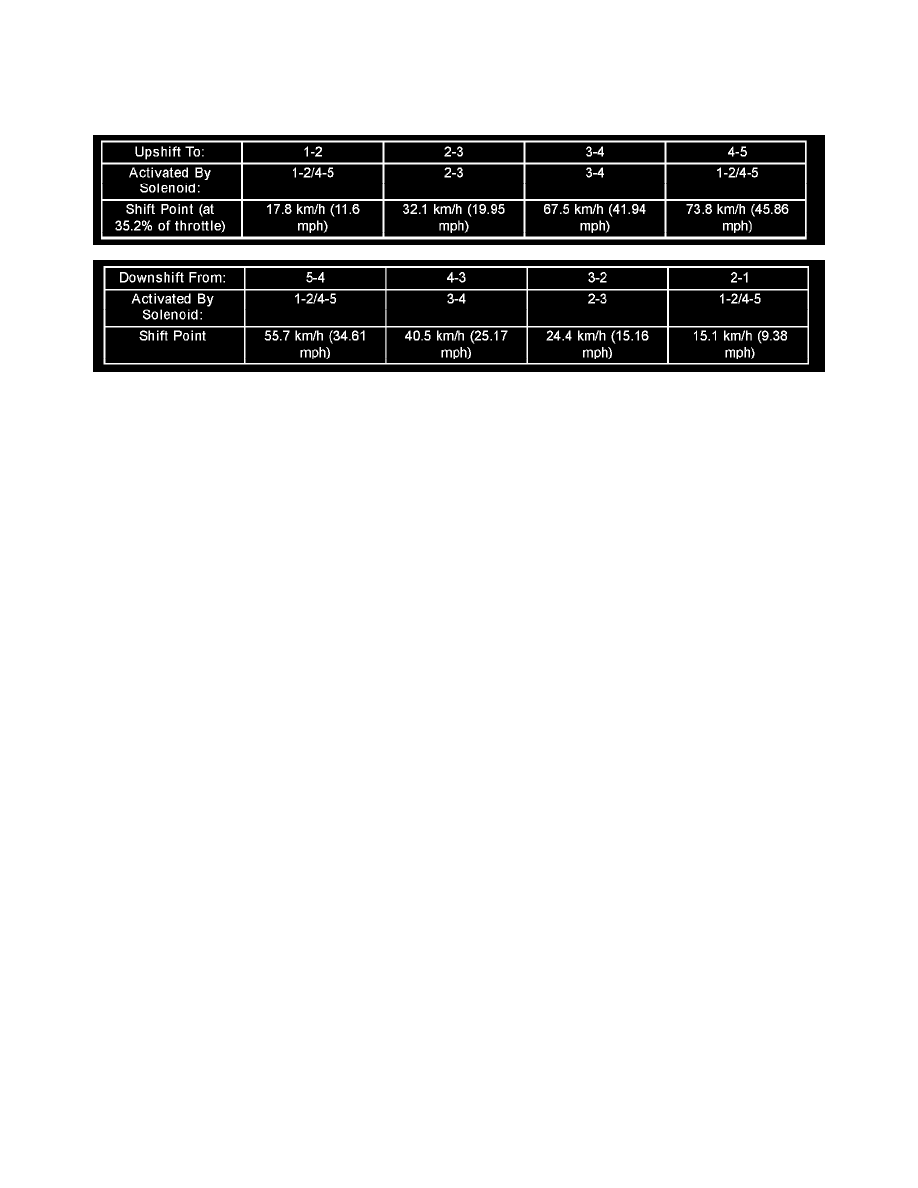Commander 2WD V6-3.7L VIN K (2006)

-
Odometer Mileage
-
Maximum Effective Torque.
-
Engine in Limp-In Mode/Mileage Where DTC Was Set.
SHIFT SCHEDULES
The basic shift schedule includes up and downshifts for all five gears. The TCM adapts the shift program according to driving style, accelerator pedal
position and deviation of vehicle speed. Influencing factors are:
-
Road Conditions.
-
Incline, Decline and Altitude.
-
Trailer Operation, Loading.
-
Engine Coolant Temperature.
-
Cruise Control Operation.
-
Sporty Driving Style.
-
Low and High ATF Temperature.
DOWNSHIFT SAFETY
Selector lever downshifts are not performed if inadmissible high engine rpm is sensed.
ADAPTATION
To equalize tolerances and wear, an automatic adaptation takes place for:
-
Shift Time.
-
Clutch Filling Time.
-
Clutch Filling Pressure.
-
Torque Converter Lock-Up Control.
Adaptation data may be stored permanently and to some extent, can be diagnosed.
Driving Style Adaptation
The shift point is modified in steps based on the information from the inputs. The control module looks at inputs such as:
-
vehicle acceleration and deceleration (calculated by the TCM).
-
rate of change as well as the position of the throttle pedal (fuel injection information from the ECM).
-
lateral acceleration (calculated by the TCM).
-
gear change frequency (how often the shift occurs).
Based on how aggressive the driver is, the TCM moves up the shift so that the present gear is held a little longer before the next upshift. If the driving
style is still aggressive, the shift point is modified up to ten steps. If the driving returns to normal, then the shift point modification also returns to the
base position.
This adaptation has no memory. The adaptation to driving style is nothing more than a shift point modification meant to assist an aggressive driver. The
shift points are adjusted for the moment and return to base position as soon as the inputs are controlled in a more rational manner.
Shift Time Adaptation (Shift Overlap Adaptation, Working Pressure)
Shift time adaptation is the ability of the TCM to electronically alter the time it takes to go from one gear to another. Shift time is defined as the time it
takes to disengage one shift member while another is being applied. Shift time adaptation is divided into four categories:
1. Accelerating upshift, which is an upshift under a load. For shift time adaptation for the 1-2 upshift to take place, the transmission must shift from
